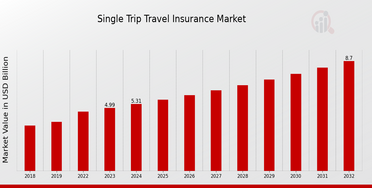Startup Survival Guide: The 3 Insurance Policies You Can’t Afford to Skip – Ssunnel
It was the smell of freshly baked croissants that first drew customers to The Rustic Crumb, a cozy bakery in Portland, Oregon. But on a rainy Tuesday morning in 2022, the scent of butter and sugar was overshadowed by the metallic tang of panic. A regular customer, Ms. Carter, slipped on a stray muffin crumb near the counter, fracturing her wrist and shattering the bakery’s financial stability in one swift fall. The lawsuit that followed demanded $50,000—a sum the owners hadn’t budgeted for, believing their “careful staff” and “clean floors” were insurance enough.
The Rustic Crumb’s story is a cautionary tale for startups. In the rush to launch, many founders overlook insurance, dismissing it as a cost for “established” businesses. But the truth is, risk doesn’t wait for revenue. Whether you’re baking muffins, coding apps, or consulting Fortune 500 companies, these three policies are your financial life jackets in a sea of unpredictability.
1. General Liability Insurance: The Floor-Mop Policy
What It Covers
General liability insurance (GL) protects against third-party claims of bodily injury, property damage, and advertising injuries (e.g., slander). For The Rustic Crumb, it would have covered Ms. Carter’s medical bills, legal fees, and settlement.
Cost Benchmarks
- Average annual premium: 500–1,200 for small businesses.
- Factors affecting cost: Industry, location, payroll size. A bakery pays less than a construction firm.
The Rustic Crumb’s Mistake: The owners skipped GL to save $750/year. The lawsuit cost them 60x that amount.
Industry-Specific Risks
- Food businesses: Slip-and-fall claims, foodborne illness lawsuits.
- Retail: Customer injuries, damaged merchandise.
- Contractors: Property damage (e.g., accidentally flooding a client’s bathroom).
2. Professional Liability (E&O): The “Oops” Insurance
What It Covers
Errors and omissions (E&O) insurance shields against claims of negligence, misrepresentation, or undelivered promises. Think of it as protection for brain-based businesses.
Case Study: A tech startup, CodeCraft, faced a $120,000 lawsuit when a bug in their software caused a client’s e-commerce site to crash during Black Friday. Their E&O policy covered legal defense and settlements.
Cost Benchmarks
- Average annual premium: 800–2,500 for consultants, developers, and creatives.
- Factors affecting cost: Project size, industry complexity. A freelance graphic designer pays less than a medical IT firm.
Industry-Specific Risks
- Consultants: Missed deadlines, flawed strategies.
- Developers: Software malfunctions, data breaches.
- Healthcare startups: Misdiagnosis via telehealth apps.
3. Cyber Insurance: The Digital Bodyguard
What It Covers
Cyber insurance handles costs from data breaches, ransomware attacks, and phishing scams. This includes legal fees, customer notifications, and PR crisis management.
Case Study: Bean & Leaf, a subscription coffee startup, lost $200,000 when hackers breached their customer database. Cyber insurance covered forensic investigations, credit monitoring for clients, and regulatory fines.
Cost Benchmarks
- Average annual premium: 1,000–3,000 for small businesses.
- Factors affecting cost: Data sensitivity, revenue. A bakery storing emails pays less than a fintech handling credit cards.
Industry-Specific Risks
- E-commerce: Credit card fraud, website downtime.
- Healthcare: HIPAA violations, patient data leaks.
- Startups with remote teams: Phishing attacks on vulnerable home networks.
The Art of Bundling: How to Save Without Sacrificing Safety
The Rustic Crumb’s owners could have bundled GL with property insurance (for ovens and inventory) and saved 15%. Bundling, or a Business Owner’s Policy (BOP), combines core coverages at a discount.
Bundling Tips:
- Pair GL + Property: Ideal for brick-and-mortar businesses.
- Add Cyber to E&O: Common for tech and consulting firms.
- Ask About Umbrella Policies: Extra liability coverage for high-risk industries.
Cost Savings: Startups bundling 2+ policies save 10–25% on average.
The Hidden Peril Startups Ignore: Industry Exclusions
Insurance isn’t one-size-fits-all. A generic policy might exclude critical risks:
- Food trucks: Spoiled inventory during power outages.
- AI startups: Algorithmic bias lawsuits.
- Event planners: Vendor no-shows (requires “event cancellation” add-ons).
The Rustic Crumb’s Redemption: After the lawsuit, they bought a BOP with GL, spoilage coverage, and equipment breakdown protection. “We sleep better now,” the owner admits.
How to Start: A 3-Step Checklist
- Audit Your Risks: List worst-case scenarios (a client suing, a hacker holding data hostage).
- Compare Quotes: Use platforms like CoverWallet or Hiscox for startup-friendly options.
- Review Annually: Update policies as you scale. Hiring remote workers? Reassess cyber coverage.
The Bottom Line: Insurance Isn’t a Cost—It’s an Investment
The Rustic Crumb reopened six months after the lawsuit, but the owners still regret their initial gamble. “We thought insurance was for ‘big guys,’” they say. “Now we know it’s how small guys become big guys.”
For startups, insurance isn’t about fearing the worst—it’s about freeing yourself to focus on the best: innovating, growing, and yes, even baking the perfect muffin.



